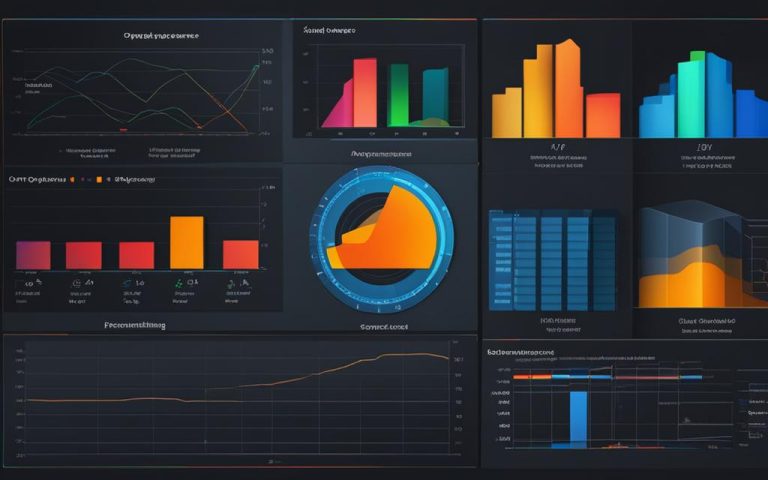Cloud-native operating systems are specifically designed for the cloud computing environment, providing businesses with the ability to build, deploy, and manage modern applications efficiently. By adopting a cloud-native approach, organizations can take full advantage of cloud-native technologies that support fast and frequent changes to applications without impacting service delivery. This results in increased efficiency, reduced costs, and improved availability for businesses.
Cloud-native applications are built using microservices and containers, enabling faster development cycles, better scalability, and easier deployment. The Cloud Native Computing Foundation (CNCF) is an open-source foundation that supports the development of critical cloud-native components. Cloud-native application development practices, such as continuous integration and continuous delivery (CI/CD) and serverless computing, further enhance the benefits of cloud-native operating systems.
– Add more relevant details as keywords to enrich your text – cloud-native OS, cloud-native operating systems, cloud efficiency.
What is Cloud Native?
Cloud native refers to the approach of building and running scalable applications that fully leverage cloud-based services and delivery models. It involves adapting to the architectural constraints offered by the cloud and decomposing applications into loosely coupled services.
Unlike traditional monolithic applications, cloud-native applications are designed to take advantage of the elasticity and distributed nature of the cloud.
This results in greater speed, agility, scalability, reliability, and cost-efficiency for businesses.
Cloud native applications are specifically designed for the cloud environment, utilizing technologies and methodologies such as microservices, containers, DevOps, and continuous integration and continuous delivery (CI/CD).
They are tailored to meet the unique requirements of cloud computing and offer benefits such as faster innovation, reliable releases, scalability, lower costs, higher availability, portability, better security, and improved compliance.
What is Cloud Computing?
Cloud computing refers to the delivery of computing services over the Internet, allowing businesses to access and store data remotely without the need for physical servers and infrastructure. It offers various types of services, including Infrastructure as a Service (IaaS), Platform as a Service (PaaS), and Software as a Service (SaaS).
Cloud computing provides several benefits for businesses. First and foremost, it offers cost savings by reducing capital expenses. Instead of investing in expensive hardware and infrastructure, businesses can pay for computing resources on-demand, saving money on upfront costs. This pay-as-you-go model allows businesses to scale resources based on their needs, ensuring they only pay for what they use.
In addition to cost savings, cloud computing provides scalability and flexibility. Businesses can easily scale their computing resources up or down as their needs change, ensuring they have the necessary resources to support their operations. This scalability enables businesses to adapt to fluctuations in demand and handle peak loads without any disruptions.
Cloud computing also offers high availability and ease of deployment. Businesses can access their computing resources from anywhere with an internet connection, enabling remote work and increasing productivity. The cloud’s distributed nature ensures high availability of data, minimizing the risk of data loss or downtime. Moreover, cloud computing simplifies deployment, allowing businesses to quickly deploy applications and services without the need for extensive setup or configuration.
However, businesses must consider data security and vendor lock-in when adopting cloud computing. While cloud service providers prioritize data security, businesses need to implement additional measures to protect sensitive data. Vendor lock-in refers to the situation where a business becomes reliant on a specific cloud service provider’s technologies and platform, making it challenging to switch providers in the future.
Example Table:
| Benefits of Cloud Computing | Description |
|---|---|
| Cost Savings | Pay-as-you-go model reduces upfront investment in hardware and infrastructure. |
| Scalability | Easily scale computing resources up or down based on business needs. |
| Flexibility | Access computing resources from anywhere with an internet connection. |
| High Availability | Ensure data availability and minimize downtime. |
| Ease of Deployment | Quickly deploy applications and services without extensive setup. |
Cloud computing is a powerful technology that enables businesses to leverage computing resources efficiently and effectively. By adopting cloud-based services, businesses can reduce costs, scale resources, and access data from anywhere, enhancing their overall productivity and competitiveness.

Key Differences between Cloud Computing and Cloud Native
While cloud computing and cloud native are both related to the cloud environment, there are key differences between the two approaches.
Cloud computing focuses on utilizing remote computing resources and reducing infrastructure costs, providing businesses with scalability and flexibility. It allows organizations to access computing services over the internet, eliminating the need for physical servers and infrastructure. Cloud computing offers various types of services, including Infrastructure as a Service (IaaS), Platform as a Service (PaaS), and Software as a Service (SaaS). This approach enables businesses to reduce capital expenses by paying for computing resources on-demand, easily scale resources as needed, and access computing resources from anywhere with an internet connection. However, data security and vendor lock-in are considerations that businesses need to address when adopting cloud computing.
On the other hand, cloud native involves designing and developing applications specifically for the cloud environment. Unlike traditional monolithic applications, cloud native applications are built using microservices and containers, enabling faster development cycles, better scalability, and easier deployment. Cloud native takes cloud computing a step further by optimizing applications for the cloud, providing greater scalability and flexibility. It leverages technologies and methodologies such as microservices, containers, DevOps, and continuous integration and continuous delivery (CI/CD). Cloud native applications are tailored to meet the unique requirements of cloud computing, offering benefits such as faster innovation, reliable releases, scalability, lower costs, higher availability, portability, better security, and improved compliance. However, cloud native also introduces higher operational complexity compared to cloud computing.
Table: Key Differences between Cloud Computing and Cloud Native
| Cloud Computing | Cloud Native |
|---|---|
| Utilizes remote computing resources | Designs and develops applications specifically for the cloud |
| Reduces infrastructure costs | Optimizes applications for the cloud |
| Provides scalability and flexibility | Offers greater scalability and flexibility with microservices and containers |
| Access to various cloud services (IaaS, PaaS, SaaS) | Utilizes cloud-native technologies and methodologies |
| Less operational complexity | More operational complexity |
Understanding these differences between cloud computing and cloud native can help businesses decide which approach is best suited for their needs and goals. Cloud computing offers convenience, cost-effectiveness, scalability, and flexibility, while cloud native provides optimized applications, faster development cycles, improved resilience, and higher operational complexity. Ultimately, the choice depends on the specific requirements and priorities of the business.
Benefits of Cloud Computing
Cloud computing offers numerous benefits for businesses, making it an essential component of modern digital infrastructure. From cost savings to scalability and flexibility, cloud computing provides organizations with the tools they need to optimize their operations and drive growth.
1. Cost Savings
One of the major advantages of cloud computing is its ability to reduce costs for businesses. By leveraging the cloud, organizations can avoid the upfront investment in physical infrastructure, such as servers and storage. Instead, they only pay for the computing resources they actually use. This pay-as-you-go model eliminates the need for costly hardware maintenance, upgrades, and repairs, resulting in significant savings for businesses.
2. Scalability
In today’s dynamic business environment, scalability is crucial for success. Cloud computing allows businesses to easily scale their computing resources up or down based on their needs, providing unparalleled flexibility. Whether it’s peak times, seasonal demands, or unexpected spikes in traffic, the cloud can seamlessly adapt to fluctuations in workload. This scalability ensures that businesses have the necessary resources to meet customer demands without over-provisioning or underutilizing their infrastructure.
3. Flexibility
Cloud computing offers businesses unparalleled flexibility in accessing computing resources. With an internet connection, organizations can access their applications and data from anywhere, at any time, on any device. This flexibility enables seamless remote work, collaboration, and global accessibility, supporting modern work styles and remote teams. Additionally, cloud-based services can be easily integrated with existing systems and platforms, allowing for streamlined operations and improved efficiency.
4. High Availability and Ease of Deployment
Cloud computing provides high availability of data and applications, ensuring that businesses can continue their operations without interruption. Cloud service providers have multiple data centers and redundant hardware, ensuring data resilience and minimizing the risk of data loss. Additionally, cloud deployment offers businesses ease of implementation and rapid scalability. By leveraging cloud-based solutions, organizations can quickly deploy new applications, services, and updates, reducing time-to-market and accelerating business growth.
| Benefits of Cloud Computing |
|---|
| Cost Savings |
| Scalability |
| Flexibility |
| High Availability and Ease of Deployment |
Note: These benefits are not exhaustive, but they represent some of the key advantages that businesses can derive from adopting cloud computing.
Despite the advantages, businesses should also consider certain factors when adopting cloud computing, such as data security and potential vendor lock-in. It is essential to carefully assess the security measures provided by cloud service providers and ensure compliance with industry regulations to protect sensitive data. Proper vendor evaluation and strategic planning can help businesses mitigate risks and unlock the full potential of cloud computing.
Cloud computing has revolutionized the way businesses operate, enabling cost savings, scalability, and flexibility like never before. By embracing cloud-based solutions, organizations can optimize their operations, enhance agility, and stay competitive in today’s digital landscape.
Conclusion
Cloud-native operating systems offer a tailored solution for modern infrastructure, seamlessly integrating with the cloud to optimize efficiency and deliver numerous benefits to businesses. By leveraging cloud-native technologies for building, deploying, and managing applications, organizations can significantly increase efficiency, reduce costs, ensure availability, and achieve faster innovation. While cloud computing provides convenience and cost-effectiveness by utilizing remote computing resources, cloud-native takes it a step further by specifically optimizing applications for the cloud environment.
Understanding the differences between cloud computing and cloud-native is crucial for businesses to make informed decisions about their digital infrastructure. Cloud-native operating systems are designed to fully leverage the benefits of the cloud, driving innovation in the modern business landscape. Businesses can take advantage of features like microservices, containers, and DevOps practices, which enable faster development cycles, higher scalability, and easier deployment. These cloud-native technologies offer benefits such as faster time-to-market, reliable releases, scalability, lower costs, higher availability, portability, improved security, and enhanced compliance.
When considering their digital infrastructure, organizations must carefully evaluate their needs and goals to decide whether cloud computing or cloud-native is the right approach. Cloud-native operating systems provide a comprehensive solution that aligns with the requirements of modern applications and cloud environments, offering optimal efficiency and scalability. By embracing cloud-native technologies, businesses can unlock the full potential of the cloud, drive innovation, and gain a competitive edge in today’s digital landscape.
FAQ
What are cloud-native operating systems?
Cloud-native operating systems are designed specifically for the cloud computing environment. They allow businesses to build, deploy, and manage modern applications efficiently.
What is the definition of cloud native?
Cloud native refers to the approach of building and running scalable applications that fully leverage cloud-based services and delivery models. It involves adapting to the architectural constraints offered by the cloud and decomposing applications into loosely coupled services.
What is cloud computing?
Cloud computing refers to the delivery of computing services over the Internet, allowing businesses to access and store data remotely without the need for physical servers and infrastructure.
What are the key differences between cloud computing and cloud native?
Cloud computing focuses on utilizing remote computing resources and reducing infrastructure costs, while cloud native involves designing and developing applications specifically for the cloud.
What are the benefits of cloud computing?
The key benefits of cloud computing include cost savings, scalability, flexibility, high availability, and ease of deployment.
What are the advantages of cloud-native operating systems?
Cloud-native operating systems provide tailored solutions for modern infrastructure, offering seamless cloud integration, optimal efficiency, and numerous benefits for businesses.



















